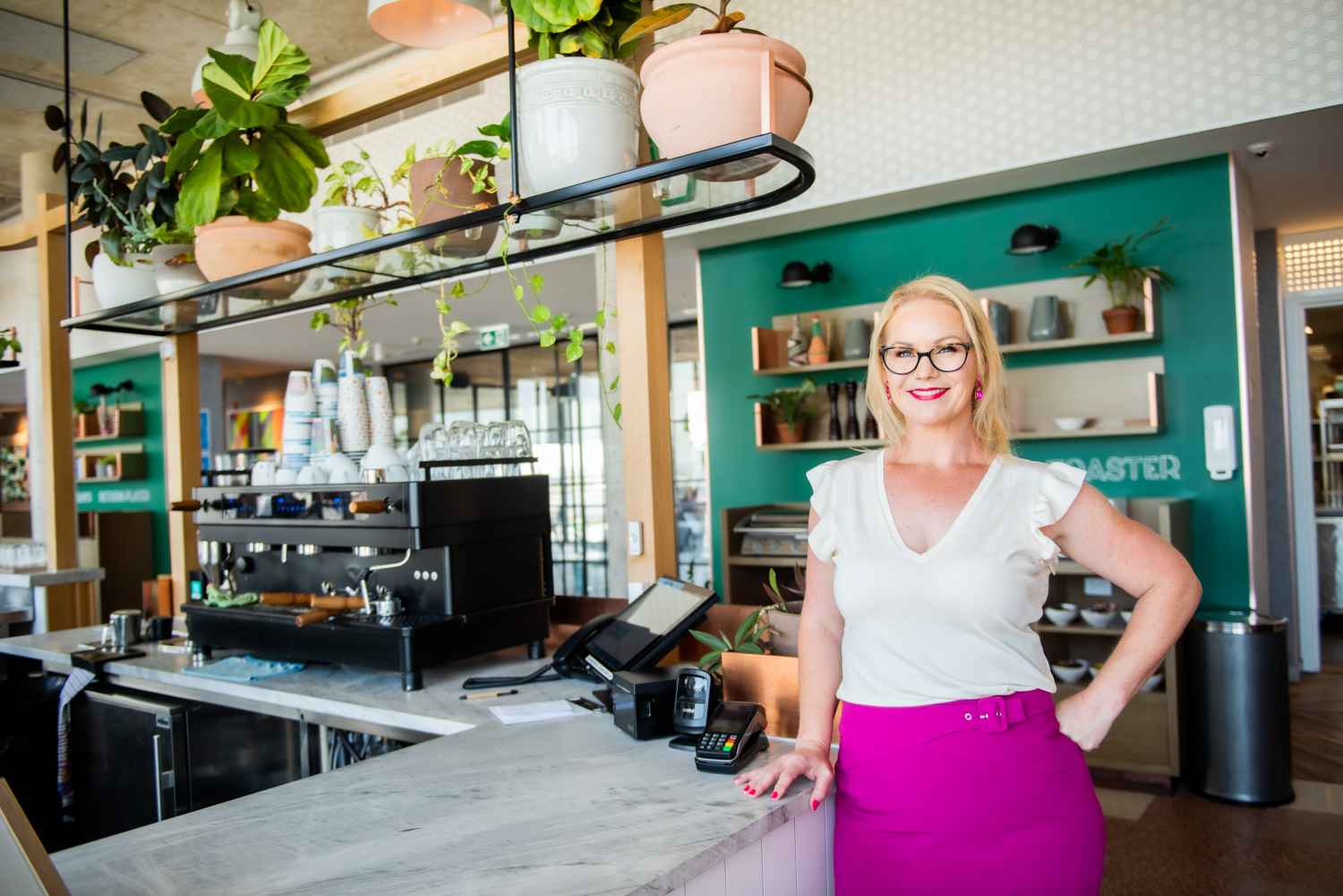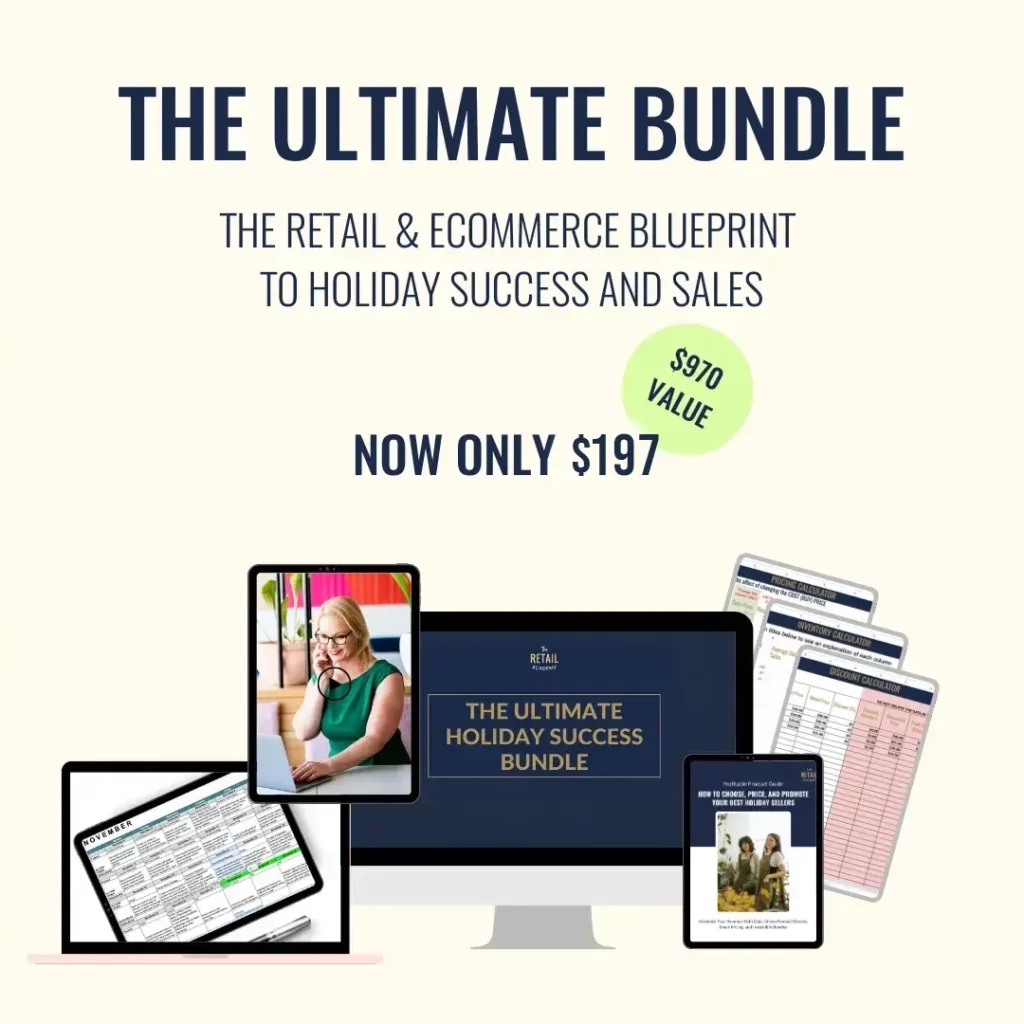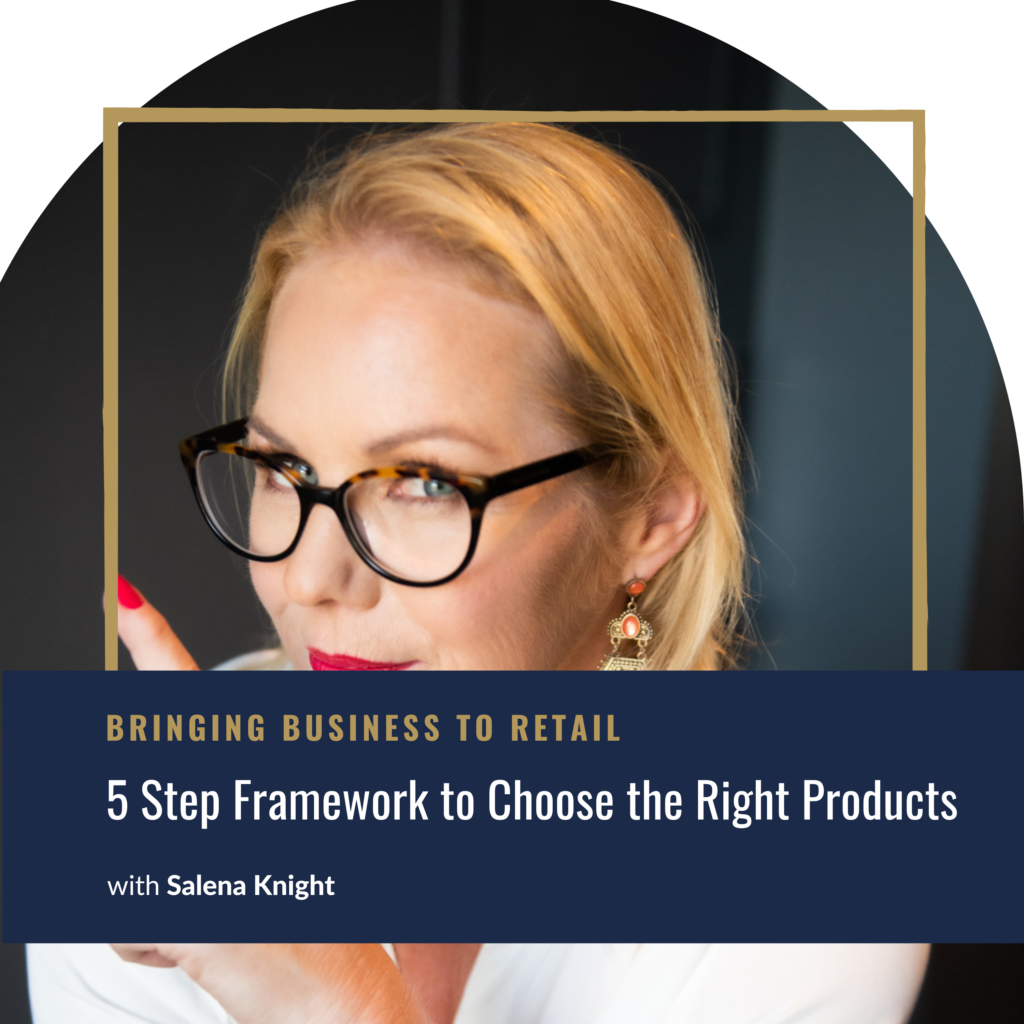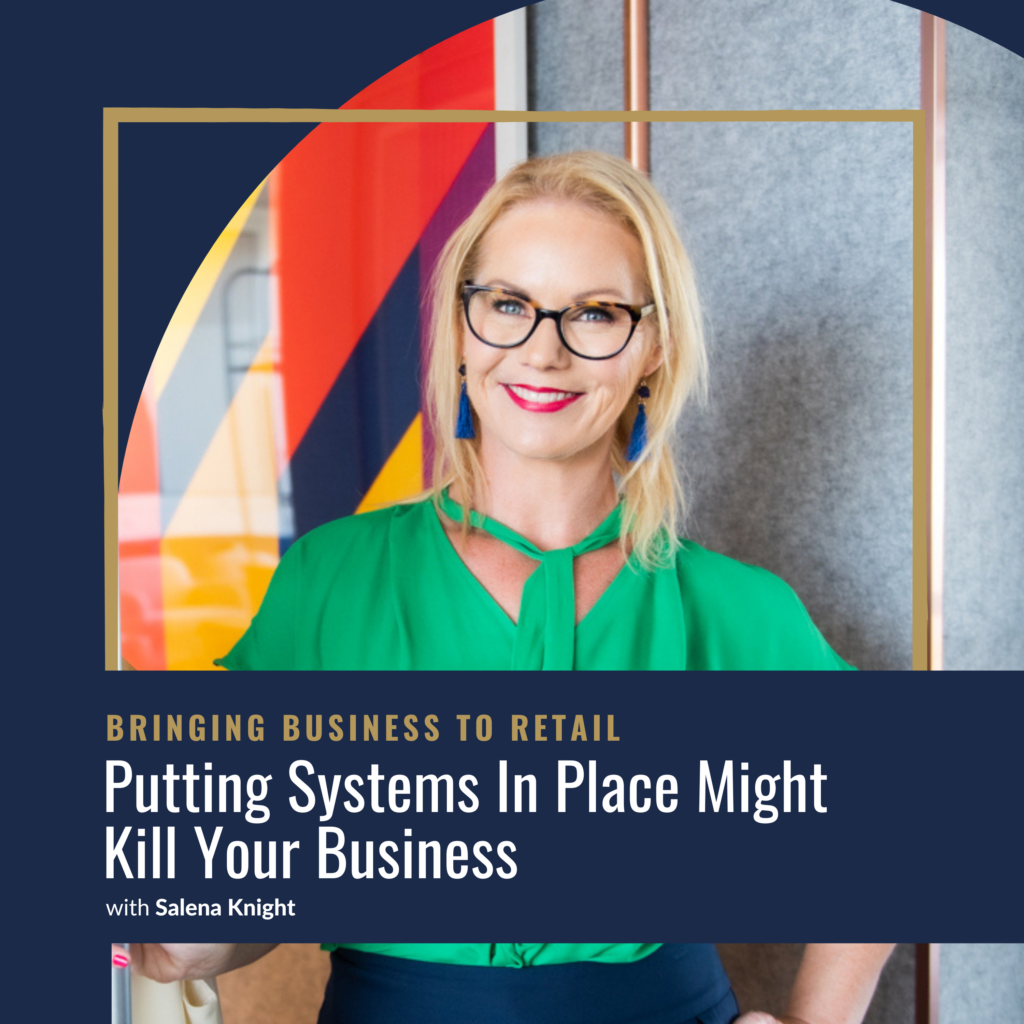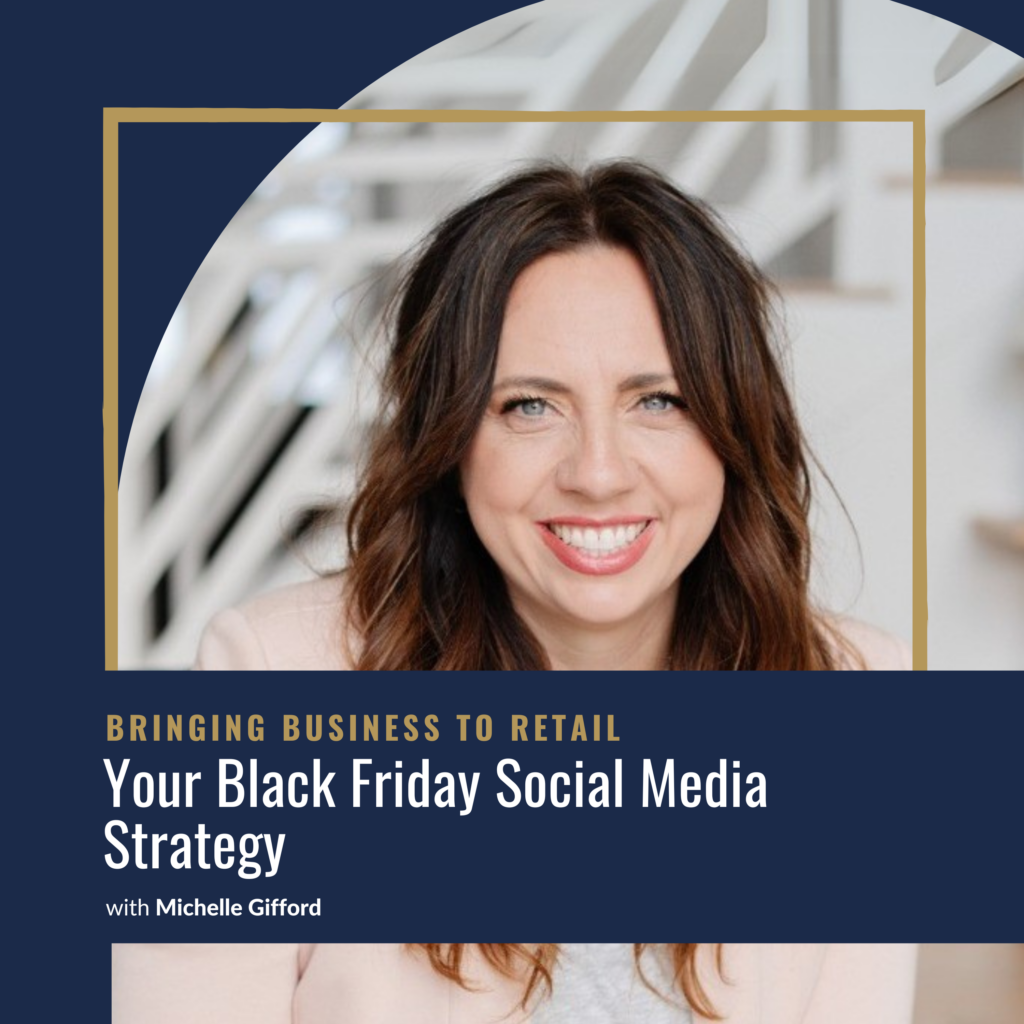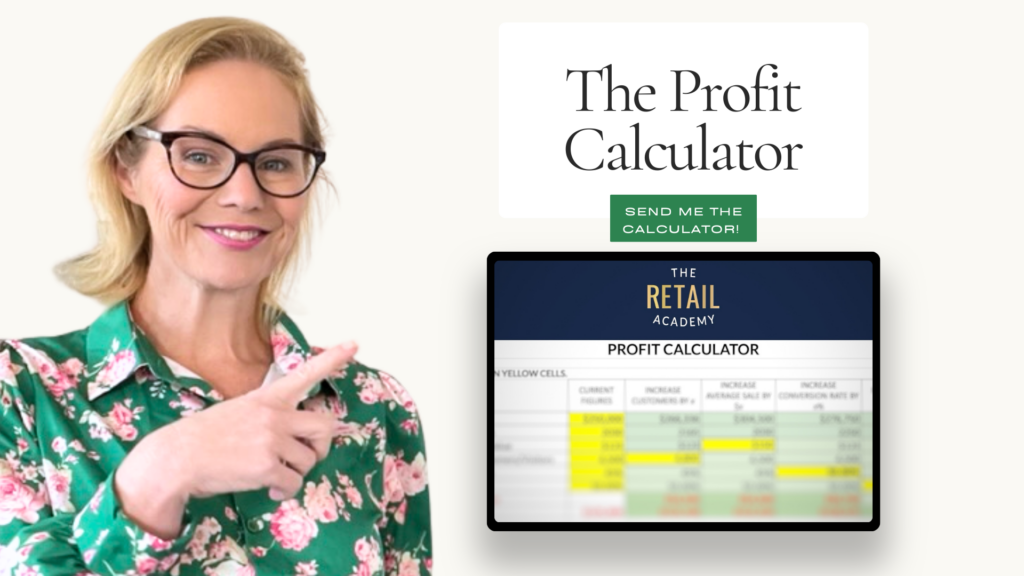
SHOW NOTES
Hey there,
You nailed your Black Friday sales, but what happens next
In this episode, I dive into what most retailers miss: retention.
75% of first-time customers never buy again, which means most of your hard work (and ad spend) disappears after Cyber Week.
I share exactly how to change that.
From building a memorable unboxing experience to sending smart post-purchase emails and measuring repeat purchase rates, you’ll learn how to turn one-time buyers into loyal fans.
Whether you run an online store or a brick-and-mortar shop, this episode gives you a clear plan to nurture your new customers, boost repeat sales, and create sustainable profit long after the holiday rush.
🎧 Plus, grab Sal’s free Discount Calculator to plan your promotions the smart way:
👉 Click here
LISTEN NOW on The Bringing Business To Retail Podcast
Hey guys. Before we jump into this week's episode, I've created a really cool tool for you to use during the holiday season, my discount calculator. In less than 60 seconds, you'll be able to calculate what pricing and what discount strategy to use to hit your revenue, sell through rate or profit goals this season.
You can grab it over at selena knight.com/calculator. Now lemme paint a picture for you. If you could just. Do me the pleasure of picturing this. It is December 1st. You have just wrapped up your biggest sales week of the year, Thanksgiving, black Friday, cyber Monday, the whole shebang. Your inbox is full of order.
Confirmations, your sales dashboard looks incredible. You, my friend, are exhausted, but you are buzzing because you. Nailed the Black Friday weekend. Fast forward to January 15th and crickets. All those new customers who flooded in during cyber week, they vanished. They never came back for the Christmas sales.
They never came back for the post-Christmas sales or the New Year's sales for you. Sales are back to normal. Or worse below normal because everybody is still recovering from the holiday spending and you are sitting there thinking what just happened? Here's what might have happened. You acquired a bunch of one-time bargain hunters, but you did not have a plan in place to turn them into repeat customers.
And I see this. Every single year. So I am giving you a heads up. I want you to do something about this so that you do not end up in that picture that I just had. You paint businesses, pour tens or even hundreds of thousands of dollars into acquiring new customers during November, and in particularly the cyber week, through ads, through promotions, through discounts, and then they do.
Absolutely nothing to try and get those customers to spend. Again, it is like filling up a leaky bucket, all of that effort, all of that money, and nothing to show for it months later, but. Here's the thing. It does not have to be this way. Welcome back to the Bringing Business to Retail show where we talk all about strategies and solutions to make you more money in your retail e-commerce business.
Now, the customers who buy from you during cyber week, even if they came for a discount, can become your most valuable customers. But only if you have a retention strategy in place. Only if you've got a plan to nurture them, to engage them, to give them a reason to come back. And today I'm breaking down exactly how to do that.
And by the end of this episode, if you are new here, you will know very, very quickly that I am the how to kind of person. I will give you the action steps. There is no thinking about what to do. I'm going to tell you. So you are gonna have a step-by-step plan to implement before, during, and after the cyber weekend.
So let's go. Let's talk about why this is such a massive problem. According to research, 75% of first time customers never make a second purchase. 75%. That is three out of every four people, three out of every four people who buy from you will never come back. On the flip side, only one in every four will ever come back.
And when you think about how much it costs to acquire a customer, especially during cyber week when ad costs are through the roof and everybody is discounting, it's likely a very terrible return on investment. Let's do some quick math, quick and dirty math. Say you spend $30 in ad costs to acquire a new customer during Black Friday.
I'm gonna say, I think it'll probably this year, it might be around a hundred dollars, but let's, in the interest of keeping it simple and Sal having to do air math. Let's say it is $30. It costs you $30 to get a new customer. And they come in and they buy a $50 product that costs you $25. So you've made $25 in gross profit.
So not net profit, gross profit. We still have other things that we have to pay outta that $25, but you have $25, you just spent $30 to get that customer. You are already $5 in the hole. Hmm. Now, if that customer never comes back. You literally lost money. You paid them to buy your product. Hmm. I don't know about you, but I don't wanna be doing that.
But if they come back three or more times over the next year, suddenly that $30 acquisition cost is spread across four purchases, and you, my friend, are profitable. This is why retention matters. It costs less to keep a customer than it does to get a new one. This is why you can't just focus on acquisition during the cyber week and you can't cross your fingers and hope for the best.
You can't just cross your fingers and think they bought once. They will buy again. You know what? I know it's easy to do, to focus on the marketing, to focus on going all in for Black Friday because it is such a massive event, and if you are already stretched thin, then it is easy to think, you know what, let's just get the sales and we will sort it out after we get through this.
But that is not how it works, my friend, because trust me. If you are that busy before you are going to be even busier afterwards, you would never get around to it, and that is why we're having this conversation now, not on the eve of Black Friday. Because customer retention matters. Retention is profit.
Retention isn't just about making your acquisition costs back. It is about building a sustainable business because repeat customers are proven to spend more. They buy more frequently, and they are more likely to refer their friends. They are the foundation of your business. So if you are not actively working to retain the customers that you get during cyber week.
You are leaving the biggest opportunity on the table. First things first. If you want to turn those new holiday shoppers into lifetime customers, you gotta start with the right holiday shoppers. Not all cyber week customers are going to be created equal. Some people are serial discounts shoppers. They will buy from you once because you had a good deal on the thing that they wanted, and then they're fickle.
They will just move on to the next place with the next sale. These people are very hard to retain, so we do not wanna be spending an awful lot of money to get them. But then there are our other customers, the ones who have been watching your brand, who have been thinking about buying from you, who just needed a little bit of a nudge to take the next step.
These people, they're gold because they're not just buying the discount, they're buying you. They're buying the opportunity to buy from your brand. So how do you attract the right customer? How do you get the second customer, not the first customer? Well, to begin with, do not go so deep on your discounts that you only attract bargain hunters.
And I know that this is hard when it feels like everybody else is doing 40, 50, 60, 70% off. But if you are going to use discounting as your core Black Friday strategy, if you've decided to discount. Can you maybe hold out at 20 or ugh, 25%. You will attract people who actually value your products, not just people chasing the cheapest price.
Now, secondly, focus on your brand story and your brand values in your marketing. Don't just shout about the discount, talk about what makes you different. Why should someone buy from you and your brand rather than your competitors? If your marketing is only about the deal, you are attracting people who only care about the deal.
Thirdly, use your existing customer base to bring in similar customers. It is proven like people hang around with, like people, so you know they what they say. Your, your some of the value of your five closest friends. It's the same for your customers. So what can we do to get our good customers to bring in more good customers?
Referral programs work really well during the cyber weekend. Give your current good customers, not those discount hunters an incentive to bring their friends. Those referred customers are far more likely to stick around because they came in through a trusted recommendation, not just an Instagram ad or a TikTok ad.
The meal kit company that I subscribe to is always offering me the opportunity to gift a free box to a friend of mine. And I always, I always see it like every couple of weeks. It's like, Hey, here's a reward. Give a gift to your friend. It came up the other day and I knew a friend of mine was really busy.
They were going into a really busy time at work, and I sent her a message saying, Hey, I've got this free box. They're just gonna try and sell you more, but hey, take the free box. And she was like, yeah, yeah, we'll take the free box. Now, I had her over for dinner over the weekend and I asked her what happened?
Now let's just come back to the meal kick company. I'm gonna say, on average for them to supply a box probably around $20 cost to them, which is ridiculously cheap customer acquisition. It doesn't matter which niche you're in, if you're paying $20 to get a customer, that's really, really good. Plus the retention rate on referred customers.
Is always going to be way higher than a customer who just came in through paid ads on a discount or on a trial. They came in with a built in connection to the brand. So when I had my friend over, I said to her, so did you ever get that? Because I was cooking a, a meal from scratch, not a meal kit meal. And I had said to her that, could you come over because we have so much food left over from all of these meal kits that I'm, I'm just kind of throwing a bit of a potluck together and it's gonna be a bit of salad and a bit of, you know, some baked potatoes and a bit of this and a bit of that.
I just need to use up all of this food. And she's like, yeah, we'll be there. So when she came over, I said, you know what happened with you? Did you end up getting the meal kit? And she said, yeah, we still use them. They only get, I think, three meals a week now, but she said it's great when we have those days when, you know, the kids have got all the, you know, this afterschool activities and I don't wanna do takeaway and I know how long it's gonna take.
Everything's usually pretty prepped so I can have dinner on the table in 20 minutes and I feel really good about it. So it's a win for her, but it's also a win for the company because it's now been probably two or three months that my friend has still been using them. All for the customer acquisition cost of what?
$20. Step one. Be strategic about who you are bringing in, not just how many people you're bringing in. Think about that, especially if you are setting goals for like your ads management company. We don't just want cheap people. We want good quality leads. Well, let's talk about what happens after somebody buys from you.
Because honestly, this is where most businesses drop the ball. So a customer places an order. During the cyber weekend, they get an automated order confirmation, maybe they get a shipping notification, their package arrives, they open it, and. It's just a product in a box. Now, alternatively, they come into your store, they look around, they shop, they buy a product.
These days, if you are generous, you're going to put it into a bag for them. I'm seeing more and more brands who don't have any bags, but maybe you are one of those generous brands and they come in, they buy a product, you pop it in the bag, they get home, and then what happens next? This is a huge missed opportunity.
What is it? The unboxing experience, my friend. I think it is one of the most underrated retention tools that you have because this is the moment when a customer goes from, I just bought something to, I bought something from this store. I bought something from this brand. Now my husband bought a secret lab.
Gaming chair for his office. Now, he's not a gamer, but he wanted a really comfortable chair, especially when he sometimes has to spend, you know, six hours in the chair. And he did a lot of research and he found that this chair was going to be the chair that worked for him. He didn't even have anywhere he could go and see the chair.
This chair costs something like seven or $800. And this was, this was years ago, like before COVID, years ago. And if you wanna see a brand that does this, well just go and search for Secret Lab unboxing. There are thousands of YouTube videos and Reddit threads and Instagram reels all devoted to people opening their box that has inside a chair.
I mean, this brand is smart. They offer you an extended warranty if you post an unboxing video. Now, you and I both know they have already built that warranty in. But what they've done is used this as a way to generate literally tens of thousands of pieces of content and build a cult following for their brand.
Whether you create your own products or you sell somebody else's, is this something that you can create for your brand? Just last week, I ordered some paving samples from a wholesaler, and this was a trade account because my little hobby on the side is a bit of home renovation. And there was a new company.
I saw the, the ad on Instagram and they were offering paving samples, which is exactly what I was looking for. Thank goodness for retargeting cookies. I ordered them at 10 o'clock in the morning. They were delivered at three o'clock in the afternoon. I like, I'm so impressed that they managed to pick, pack, and get it to my house in hours.
But here's the thing, they were delivered as if I had bought a very expensive bottle of French wine. It was beautifully boxed inside. It had wood wool. It had a personal message. It had information about the products, and it even talked about what to do with the samples and the box if they weren't for you.
There was a, a beautiful message about how, and in fact, before I even bought the samples. Acquired the samples. I had the tick a box on the website to let me know that they would not be collecting the samples back. But everything had been built with sustainability and recyclability in mind. But the experience that I had to be treated like an expensive customer right from the beginning.
You bet your bottom dollar that I'm actually so annoyed that I didn't do the unboxing experience, but I didn't know to expect it. So I just opened it up and I was so pleased. I was like, can I put this back together and try and do an unboxing video? But you bet your bottom dollar, that brand has stuck with me.
It is gonna be a brand that I go back to again and again. Now, I'm not saying that this is going to be the best strategy for you, but if you are sitting in the premium market, if you are having products that sell for more than the average, we have to think about the customer experience. When we do all of these things, I always love to include an invitation to join a community.
Whether that is following you on Instagram, joining your email list, you could be like Secret Lab where you offer an extended warranty. If they do the unboxing video, you could ask them to sign up for your loyalty program, but give them a reason to stay connected beyond this one purchase. Alrighty. I am nearly through, and this is where most people are gonna say absolutely fail because.
After someone buys from you, you need to have an automated post-purchase email sequence. Not just one email, but a sequence. Most people will just throw you into what I call general newsletter land. It's like once you bought from us, you just go onto the regular mailing list. I think. That you have an opportunity to keep customers off their first purchase when you send them through a very specific set of emails that is designed to engage them, designed to educate them, and designed to get them to buy again.
So I'm not saying just put them through a welcome sequence If they have already purchased from you, you really need to think about what does that look like? Because a generic welcome sequence is not going to get the same engagement, the same education, and the same encouragement because they've already purchased from you.
So it's really taking the time to look at the customer journey. Now, normally what would happen is you would send out an order confirmation, or maybe you'd send a receipt if it's a POS. And maybe you might even have the opportunity for people to follow you on Instagram or Facebook. What I really love when it comes to the second email is, which is your shipping confirmation, is really to build the excitement.
There are some brands that do this really, really well, and I'm thinking about the brand of where I bought some dog treats. They did this really, really well. So, you know, here's what to expect when it arrives. Here is a sneak peek of products that are coming soon. Like really build that engagement and then always do what I like to call a check-in email.
Now, this could be the opportunity to ask for a review, and this is where you have to be a little bit more strategic because asking for somebody for a review, for a product before they ever had a chance to even get it or to use it, it's a wasted opportunity. So if someone is buying in store, I'm gonna go so far as you should have a different flow for them to go into because there's a good chance that they're gonna use the product a lot more quickly than if someone is buying online.
I know what I'm saying, takes work. But if the difference could be tens of thousands of dollars, is it worth you doing the work? Is it worth you getting your team to do the work? Now I always love to throw in some educational content, like how do I use the product? How do I care for the product? How do I get the most out of this product?
And again, there are some brands where this may not be the, the opportunity for you to do this kind of education. You might do education about the causes that you believe in or how your products are made. The reason I love doing this is because this is what I used to do back in the day. I was so ghetto with this because back in the day, we did not have the opportunity to be hosting things on YouTube and just sending a link.
We would literally record videos, we would upload them to our website. It would take forever for them to upload, and then we would send people an email with a link to a private page, which is where the video would host, and they would be like. Information videos on how to use your baby carrier, how to look after your reusable nappies, you know how to, you know, how to use certain types of creams or we had some behind the scenes videos, all those sorts of things.
We did it so low key and, but now we have the opportunity to do this stuff by simply pointing someone to an Instagram reel. If you have a behind the scenes video and you wanna put that into your content. Like win-win, send them an email, send them to the Instagram link, and they're going to follow you. I think it is so easy these days to get people on board if you spend the time to look at the customer journey.
The other thing that I don't see often enough, especially for consumables, like if you're in skincare, beauty, anything consumable is reminding people to come back and buy again. Reminding people that they will probably run out, you know how long it takes somebody to get through a tube of foundation. So why are we not reminding them to come back and buy again?
Think about the post purchase experience because when we think about that, it is so much easier to build out a plan to get those customers. Just because I talked about email, I don't think that this is just for e-commerce. I think there is literally nothing stopping a bricks and mortar store, even if you don't have a website from using the exact same strategies that I have just mentioned.
As I said, this is something that we did many, many years ago, and with the technology now, you can just put it up on YouTube. You can just put it up on TikTok or on Instagram, and you can point your customers there. These emails, this content, everything that you are putting out there has to feel like it's coming from a person, not a robot.
This is one of those places where AI is good, but maybe you should use their time to tweak what comes out. Use really good conversational language like we and you and us make your, uh, emails helpful, not just salesy. When I worked with an e-commerce brand to do this, when we looked at the customer journey, when we implemented, I think there was six post-purchase emails.
We saw a repeat purchase uptake go from 18% up to 31% in three months. That is nearly double just from automating a handful of emails that were actually valuable to the customer and were designed to keep them coming back and keep them engaged. Before we wrap up, let's talk about how you measure whether your retention strategy is actually working.
There are a few key metrics to track what is your repeat purchase rate? How many of your customers, and you can go back and look at last year's data, but how many of your cyber week customers actually went on to make purchases within 90 days? So literally segment out the people who purchased over the cyber weekend and then see if they purchased again.
We want to have a metric that we can use to improve, so we have to get the baseline. So what is that baseline? What are we going to improve on from last year? Then we want to look at the customer lifetime value. So those people who came in, how much have they purchased since the ones who have come back and bought again?
We want that number to be more next year. Again, this is, we're playing a long game here. We're getting people to come back again and again. So the data that we collected from last year and that we're using for this year, we're going to build on for next year. And then I would also look at your engagement rate.
So when you are building out this post purchase email flow, are people actually opening them? Are people clicking on them? You may have to go back and tweak them. So we want to be checking in. We can't just set and forget. That's not what marketing is. Marketing is all about testing, and if it's working, just leave it.
So we've gotta track those numbers. We're gonna compare them month over month, year over year, and we are going to use them to refine next year's strategy. I know it's a long way away, but that's what we do. So acquiring customers during the cyber week, in fact, I'm gonna say the whole of November is expensive.
It's competitive. It can be exhausting. If you do it right, if you have that retention strategy in place, it is also one of the most valuable opportunities of the year because the customers that you bring in during cyber week don't have to be one and dones. They can be repeat buyers, they can be loyal advocates, they can be the foundation of your business growth, but it only happens if you're intentional, which means you have to be planning for that now before the cyber week.
You cannot wait until afterwards because you will be too busy or you will just forget, and I don't want you to waste all the effort that you are putting in. It's not complicated, but it does require effort. And I promise you, this is effort that will pay off if you think that you don't want to do Black Friday because discount customers just aren't worth the effort.
Ask yourself this. Did you really have all of the things that we just talked about buttoned up? Did you have a plan to keep those customers buying that wasn't just send out my regular emails? If not, maybe it wasn't about them. Dare I say it? Maybe it was really you. So here's what I want you to do. Before cyber week hits, sit down, map out your attention strategy.
What's in the box? What emails are you sending? How are you segmenting? How are you building a community? How are you going to look after somebody after they've bought from you in store? Get it sorted now. So when the flood of new customers comes in, you are ready to turn them into repeat buyers. That is it for this week's episode.
Just a quick reminder that I created a very cool tool for you to use during the holiday season. I call it my discounted calculator. In less than 60 seconds, you'll be able to calculate what pricing and discount strategy to use to hit your revenue, your sell through, or your profit goals this season. You can grab it for free over at selena knight.com/calculator.
That's selena knight.com/calculator. All right, guys. I'll see you on the next episode. So that's a wrap. I'd love to hear what insight you've gotten from this episode and how you're going to put it into action. If you're a social kind of person, follow me at the Selena Knight and make sure to leave a comment and let me know.
And if this episode made you think a little bit differently or gave you some inspiration. Or perhaps gave you the kick that you needed to take action, then please take a couple of minutes to leave me a review on your platform of choice, because the more reviews the show gets, the more independent retail and e-commerce stores just like yours, that we can help to scale.
And when that happens, it's a win for you, a win for your community, and a win for your customers. I'll see you on the next episode.

